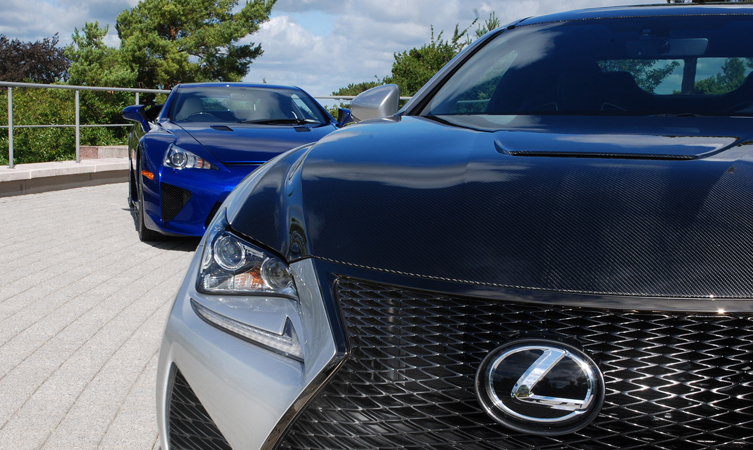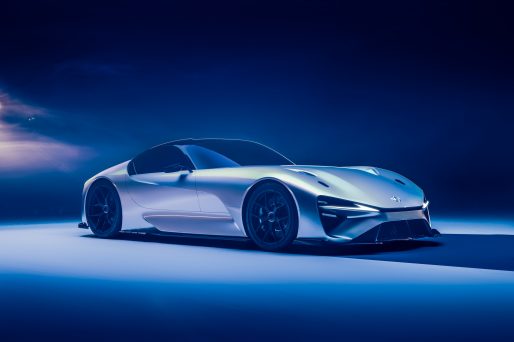The striking Lexus IS images contained within this post form the second set of snaps in our trilogy of our experimental photoshoots, which combine unconventional light sources with a social media powered reveal.
The first of the three shoots – our fifth anniversary LFA light painting gallery – was gradually unlocked by Lexus Twitter fans last week who retweeted a teaser image until it reached 100 retweets.
This week it’s the turn of the Lexus IS as we’ve highlighted the model’s pin-sharp lines in a striking pair of images, which Lexus IS owners were given an exclusive preview of via Twitter direct message, in exchange for tweeting us their favourite photograph of their car.
To create the photos, we took a Sonic Titanium IS 300h Premier and applied luminous blue vinyl tape to the model’s shutlines, bodyshell creases and to the edges of the model’s headlights and front ‘Spindle’ grille.
Above: Our IS during set-up
The styling of the IS makes it at once perfectly suited to our taping treatment and extremely difficult to work with because it’s immensely detailed and complex.
The model has an array of delicately sculptured lines
Chief designer Hideaki Iida styled the car to look as though it were forged from a single piece of metal and when sketching the car Iida took inspiration from a Lexus-branded dessert knife he happened to have about his personage at the time. Consequently, the model has an array of delicately sculptured lines such as the pronounced kink at the base of the rear doors, which look fantastic when highlighted by the tape, but make the process of applying it a long one because the vinyl is not particularly malleable to swooping panels and is prone to tearing.
In profile, there are 12 lines on or across the car and a further four at its edges, the latter form the car’s three-box shape. Up front, there is an astonishing 17 lines due in most part to the central grille and L-shaped daytime running lights which are mounted independently from the main light clusters. Applying the tape is a painstaking process and it takes a team of four people two hours to tape just one side of the IS and the front end – 30 metres of tape is used.
Applying the tape is a painstaking process
To heighten the luminosity the tape’s luminosity, high intensity flashes are blasted at different sections of the car. The images are then comped together to form one image using Photoshop. The blue backdrop in the front end image is actually the beam of the car’s brake lights; the hue has been altered to match the colour of the tape and reflect the fact that the IS in our photos is a hybrid.





